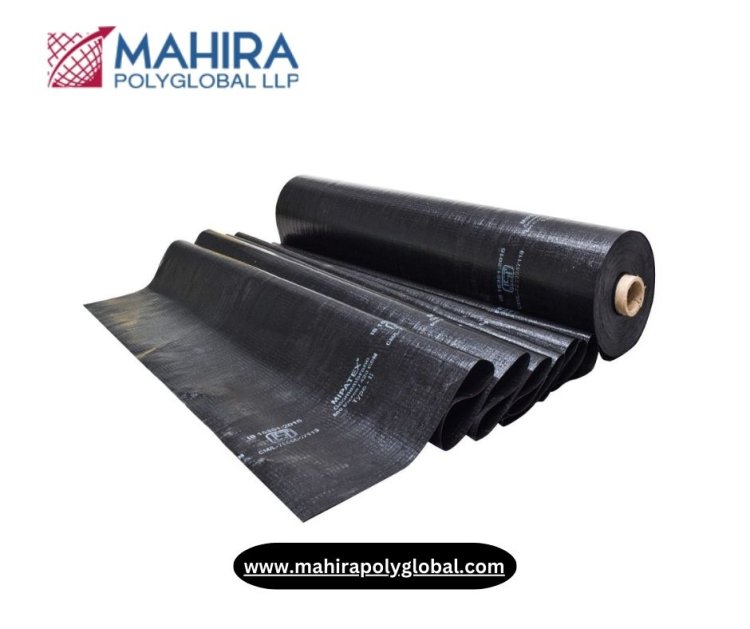Waterproof HDPE T-Rib Liners for Versatile Applications
Concrete is a durable and versatile material, but its exposure to moisture, chemicals, and environmental wear can lead to significant degradation over time.
Share this Post to earn Money ( Upto ₹100 per 1000 Views )

Concrete is a preferred material for construction due to its strength and versatility, but it isn’t impervious to the effects of moisture, chemicals, and environmental wear. Over time, exposure to these elements can weaken concrete structures, leading to costly repairs or replacements. To combat these issues, HDPE T-Rib liners have become an essential solution. Designed for waterproofing and chemical resistance, these liners provide unmatched protection, ensuring the durability and longevity of concrete installations.
This article explores the benefits, features, applications, and installation of HDPE T-Rib liners, shedding light on why they are the go-to choice for safeguarding concrete across industries.
What Are HDPE T-Rib Liners?
HDPE T-Rib liners are specialized sheets made from high-density polyethylene, designed to offer maximum protection for concrete surfaces. These liners feature ribs on one side, which integrate with the concrete to form a mechanical bond, while the exposed smooth side acts as a watertight, chemical-resistant barrier.
These liners are particularly useful in environments where concrete structures are exposed to aggressive chemicals, moisture, or physical abrasions. From industrial tanks to landfill sites, HDPE T-Rib liners are adaptable to a wide range of applications.
Features of HDPE T-Rib Liners
1. High-Strength Polyethylene Construction
HDPE T-Rib liners are manufactured using high-density polyethylene, a material known for its resilience and ability to endure extreme conditions without cracking or degrading.
2. Exceptional Waterproofing
The smooth, impermeable surface of the liner prevents water penetration, making it an excellent choice for environments with high moisture exposure.
3. Chemical Resistance
These liners are resistant to a wide array of chemicals, including acids and alkalis, ensuring they maintain their integrity in harsh industrial conditions.
4. Ribbed Design for Bonding
The T-shaped ribs on one side of the liner enable a secure mechanical connection with the concrete during installation, enhancing durability.
5. Eco-Friendly Materials
HDPE is recyclable, making these liners an environmentally responsible choice for construction projects focused on sustainability.
Advantages of HDPE T-Rib Liners
1. Long-Lasting Protection
HDPE T-Rib liners provide robust, durable protection against environmental factors and chemical exposure, extending the life of concrete structures significantly.
2. Cost Savings Over Time
Although the upfront cost of these liners may be higher than other solutions, their durability minimizes maintenance and repair expenses, offering excellent value in the long run.
3. Adaptability to Various Applications
Their versatility makes these liners suitable for projects across industries, from chemical plants to underground construction.
4. Reduced Maintenance Needs
The smooth surface prevents dirt and chemical buildup, making it easy to clean and maintain.
5. Enhanced Safety and Structural Integrity
By preventing water and chemical penetration, HDPE T-Rib liners protect not just the concrete but also the surrounding environment, ensuring safety and stability.
Applications of HDPE T-Rib Liners
1. Wastewater Treatment Plants
Wastewater facilities are prone to damage from corrosive substances. HDPE T-Rib liners shield concrete tanks and channels, preserving their integrity.
2. Chemical Storage and Handling Areas
Industries dealing with hazardous materials use these liners to prevent leaks and protect the structural integrity of storage tanks and containment areas.
3. Underground Infrastructure
HDPE T-Rib liners are frequently used in tunnels, culverts, and basements to block water seepage and enhance the longevity of these structures.
4. Mining and Quarry Operations
Mining operations often expose concrete surfaces to abrasive materials and chemicals. These liners protect against wear and corrosion in such demanding conditions.
5. Landfill and Environmental Projects
In landfill construction, HDPE liners act as barriers, preventing harmful leachates from contaminating soil and groundwater.
Choosing the Right HDPE T-Rib Liner
1. Consider the Project Requirements
Every project has unique challenges, such as chemical exposure levels or mechanical stress. Select a liner that aligns with these specific needs.
2. Prioritize Quality
Ensure you source liners from reputable Lining sheet manufacturers to guarantee high-performance materials that meet industry standards.
3. Thickness and Durability
Choose a liner with an appropriate thickness based on the level of wear and environmental stress the structure will face.
4. Cost vs. Long-Term Benefits
Evaluate the HDPE T-Rib sheet price in terms of long-term value. The durability and low maintenance of these liners often make them a cost-effective solution.
How to Install HDPE T-Rib Liners
Proper installation ensures the liner delivers its full range of benefits. The process typically involves the following steps:
1. Surface Preparation
The concrete surface should be thoroughly cleaned and leveled to ensure proper adhesion and bonding.
2. Placement of the Liner
The liner's ribbed side is pressed up against the concrete. Accurate alignment is crucial for a secure fit.
3. Concrete Pouring
Concrete is poured over the liner, embedding the ribs into the structure for a durable mechanical bond.
4. Sealing Joints
To prevent leaks, the joints between liner sheets are sealed with welding or adhesives, creating a seamless barrier.
5. Final Inspection
Once the installation is complete, the liner is inspected to address any gaps or misalignments, ensuring optimal performance.
Why HDPE T-Rib Liners Are a Reliable Choice
HDPE T-Rib liners have become indispensable for projects requiring durable, long-lasting protection for concrete. Their ability to resist water, chemicals, and environmental wear makes them a preferred choice across industries.
Additionally, sourcing these liners from trusted lining sheet manufacturers ensures that the product meets the highest quality standards. Whether for industrial use, environmental projects, or infrastructure development, HDPE T-Rib liners provide a dependable and sustainable solution.
Conclusion
HDPE T-Rib liners are a game-changer for protecting concrete structures against the harshest environmental conditions. Their superior waterproofing and chemical resistance capabilities make them an ideal choice for industries ranging from wastewater treatment to mining and construction.
By investing in high-quality liners and ensuring proper installation, businesses can enhance the durability, efficiency, and safety of their projects. As a versatile and cost-effective solution, HDPE T-Rib liners are essential for anyone looking to safeguard concrete structures and extend their lifespan in challenging environments.
Frequently Asked Questions (FAQs)
1. Can HDPE T-Rib sheets be customized?
Yes, manufacturers offer customization in terms of size, thickness, and design to meet specific project needs.
2. Are T-Rib HDPE liner sheets environmentally friendly?
Yes, these sheets are recyclable and contribute to sustainable construction practices.















